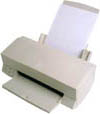The Essential Clause
Recognize an essential clause when you find one.
An adjective clause can be either essential or nonessential. To make the distinction, you must analyze the function of the clause in that particular sentence. When an adjective clause is essential, it is clarifying a general, ambiguous noun in such a way that readers understand which one of many the writer means.
Read these examples:
The man who ordered another double anchovy pizza claims to have a pet dolphin in his backyard pool.
Which man among the billions of human males on the planet? The one who ordered another double anchovy pizza!
Freddie hopes to return to the city where he met a woman with haunting green eyes.
Which of the many cities on the planet? The one where Freddie met a woman with haunting green eyes!
The student who needs an A on the final exam is copying statistics formulae on her bare ankle.
Which of the many students in the class? The one who needs an A on the final exam!
Note that the exact same clauses above—in sentences with minor alterations—can become nonessential.
Read these versions:
Mr. Hall, who ordered another double anchovy pizza, claims to have a pet dolphin in his backyard pool.
Freddie hopes to return to Cairo, where he met a woman with haunting green eyes.
Veronica, who needs an A on the final exam, is copying statistics formulae on her bare ankle.
In place of ambiguous nouns like man, city, and student, we now have Mr. Hall, Cairo, and Veronica, specific proper nouns. The information in the adjective clauses might be interesting, but that information is not necessary, for we already know which man, which city, and which student.
A proper noun usually signals that the adjective clause is nonessential. Sometimes, though, you will find such a well-defined common noun that the adjective clause is a mere accessory.
Read this example:
As we sped through the neighborhood, we spotted crows eating French fries tossed on the road. They did not fly to a tree as we expected. The birds, which never showed fear of the vehicle, watched as we swerved around them.
Birds is a common noun, but the adjective clause is nonessential because we know the exact birds that the writer means.
Punctuate essential clauses correctly.
Since an essential clause provides necessary description for a vague noun, use no punctuation to separate it from the rest of the sentence.
The car that Madeline purchased from a neighbor belches black smoke whenever she accelerates.
We took Grandma to a restaurant where servers bring everyone a slice of birthday cake.
The waiter who served the salad did not notice the caterpillar nibbling a lettuce leaf.
Which car? Which restaurant? Which waiter? We need that information in the adjective clause.
When the clause becomes decorative rather than defining—or nonessential—you will then need to separate it with commas:
The ancient Buick, which Madeline purchased from a neighbor, belches black smoke whenever she accelerates.
We took Grandma to Hullabaloo’s Excellent Eats, where servers bring everyone a slice of birthday cake.
Javier, who served the salad, did not notice the caterpillar nibbling a lettuce leaf.
©1997 - 2025 by Robin
L. Simmons
All Rights Reserved.
